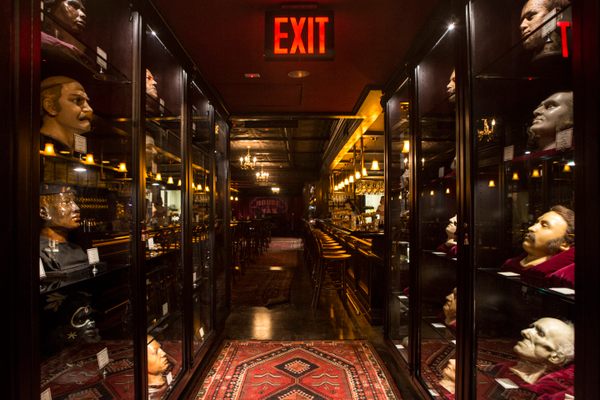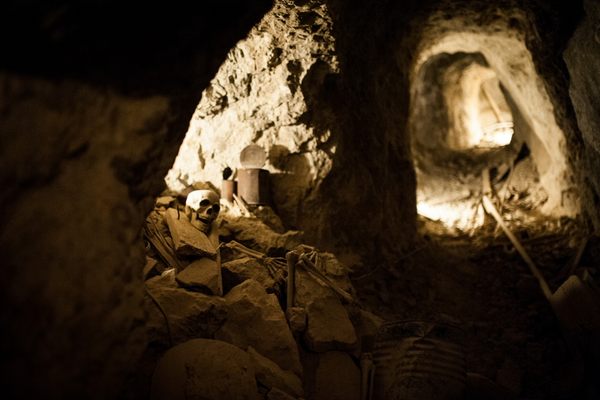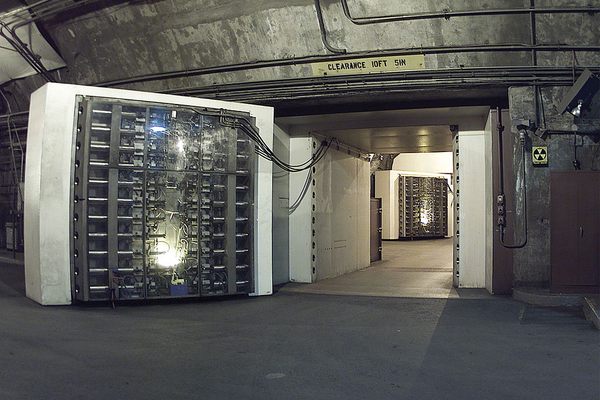Hoyt-Schermerhorn Subway Station
Michael Jackson got Bad and Crocodile Dundee walked on heads in this iconic Brooklyn subway station.
“Bad” was the second single released from Michael Jackson’s 1987 album of the same name, and the accompanying video, directed by Martin Scorsese, has become as iconic as the song itself.
Drawing heavily from West Side Story, the video saw Jackson and a group of background dancers, including an as yet undiscovered Wesley Snipes, dancing and singing through a subway station. Today thousands of commuters pass through the same subway station not knowing that the King of Pop once moonwalked over the platform.
The Hoyt-Schermerhorn subway station in downtown Brooklyn is remarkable in that half of it is abandoned. As well as currently servicing the A, C, and G lines, it was once home to a shuttle line called the HH that ran to Court Street, just a few blocks away. Due to the proximity of the Court Street station, and its infrequent use, the HH shuttle was discontinued in 1946. The two extra platforms at Hoyt-Schermerhorn have been closed ever since.
The terminus at Court Street was repurposed into the excellent New York Transit Museum, whilst the unused line heading at Hoyt-Schermerhorn has provided the perfect shooting location for many movies, TV shows, and music videos. Subway scenes from Crocodile Dundee, The Warriors, The Taking of Pelham 123, and maybe most iconically of all, Martin Scorsese’s 18-minute video for “Bad” all took place along the disused HH shuttle line.
Following Michael Jackson’s death in 2009, Letitia James, council woman for New York City, led a petition to have the station partly re-named in Jackson’s honor. However, the MTA demurred, stating that naming stations after individuals would confuse riders—although the naming of stations was not quite as much a stumbling block for Barclays, when they offered to pay an estimated $200,000 a year to rename the Atlantic-Pacific subway station shortly thereafter.
Walking along the mezzanine level of Hoyt-Schermerhorn is another curiosity: a striking series of floor-to-ceiling length blue tiles, with a circled, yellow L in the middle. Not indicating, as would at first seem, the presence of the L train, these largely unnoticed tiles advertised what was once Brooklyn’s largest department store, Loeser’s. Occupying an entire city block bounded by Fulton and Livingston Streets, Elm and Bond, when it opened in 1887, it was one of New York’s glitziest shopping experiences. It was one of the first stores to install electric lights, telephones, elevators, and escalators. There was an underground entrance leading off Hoyt-Schermerhorn’s mezzanine and up into the store.
Today, there is little at the Hoyt-Schermerhorn stop to remind passengers of the once grandiose department store above ground, or the iconic 1980s music video filmed below.
Community Contributors
Added by
The Atlas Obscura Podcast is Back!




























Follow us on Twitter to get the latest on the world's hidden wonders.
Like us on Facebook to get the latest on the world's hidden wonders.
Follow us on Twitter Like us on Facebook